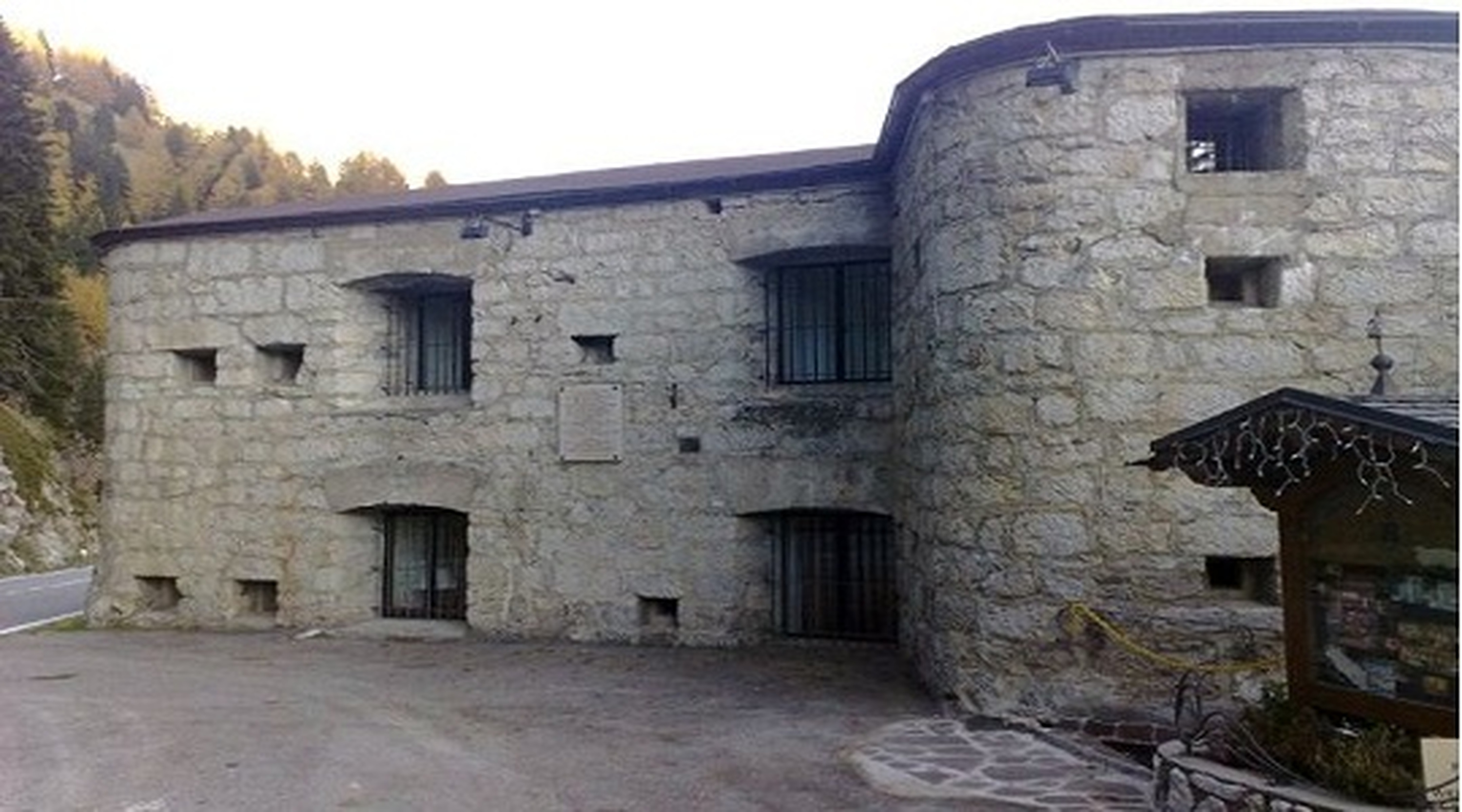Forte Tagliata Ruaz
 Monumenti
Monumenti
-
 0039043679130
0039043679130
-
 info@arabba.it
info@arabba.it
-
 sito web
sito web
-
Lun tutti i giorni Mar tutti i giorni Mer tutti i giorni Gio tutti i giorni Ven tutti i giorni Sab tutti i giorni Dom tutti i giorni
Descrizione
Il Forte Ruaz, o meglio la Tagliata stradale di Ruaz, è una fortificazione austroungarica, costruita tra il 1897 e il 1900, parte del grande sistema difensivo lungo il confine italiano. Il forte si trova alle pendici del Col di Lana, a una quota di 1.400 m, e assieme al Forte Corte formava lo sbarramento Buchensteintal, appartenente al Rayon V. Lo sbarramento aveva il compito di controllare la valle del Cordevole e la strada che da Livinallongo porta ad Arabba. Il forte è strutturato su una base quadrata, e ha una caponiera e una mezza caponiera. Le mura hanno una larghezza massima 1,70 m. Sul suo lato frontale, il forte aveva sei cannoniere. Nel 1972 venne restaurato dalla famiglia Waillant, che lo adibì a ristorante. Oggi è parzialmente visitabile, dato che le sale da pranzo si trovano nelle vecchie stanze, ed è collegato a un hotel attraverso un passaggio segreto strategico. Nel piazzale sono esposti due cannoni austriaci da 10 cm.
Forte Ruaz, or shall we say the Ruaz road Slice, is an Austro-Hungarian fort, built between 1897 and 1900, part of the great defence system running along the Italian border. The fort is on the slopes of Col di Lana, 1400 m up and, together with Forte Corte, formed the Buchensteintal wall, belonging to the Rayon V. This wall was there to control the Cordevole valley and the road from Livinallongo to Arabba. The fort has a square base, a caponiere and a half caponiere. The walls are maximum 1.70 m wide. The fort had six cannons on its front. In 1972, it was renovated by the Waillant family to become a restaurant. It can now be visited in part, as the dining rooms are in the old rooms, and is linked to a hotel along a strategic, secret
passageway. Two Austrian 10 cm cannons are on display in the square.
Die Festung Ruaz bzw. die Straßensperre in Ruaz, ist eine österreich-ungarische Festung, die zwischen 1897 und 1900 gebaut wurde und zu dem großen Verteidigungssystem der italienischen Grenze gehörte. Die Festung befindet sich unterhalb des Col di Lana auf 1.400 m und bildet gemeinsam mit der Festung Corte die Sperre des Buchensteintales. Die Sperre hatte die Aufgabe, das Cordevole Tal und die Straße von Buchenstein nach Arabba zu überwachen. Die Festung ist auf einer quadratischen Grundfläche gebaut worden und weist eine Kaponniere und eine halbe Kaponniere auf. Die Mauer besitzt eine Höchstbreite von 1,70 m. Auf der Vorderseite besaß die Festung sechs Kaponniere. 1972 wurde die Festung von der Familie Waillant modernisiert und zu einem Restaurant umgebaut. Heute kann die einstige Festung teilweise besichtigt werden, da sich ein Restaurant in den alten Räumen befindet. Die Festung ist mit einem unterirdischen Gang zum dazugehörigen Hotel verbunden. Auf dem Platz vor der Festung bzw. des Hotels befinden sich zwei österreichische 10 cm Kanonen.

